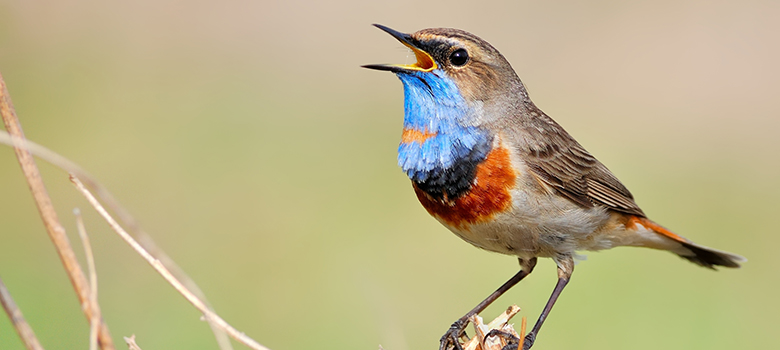
Birds and computational neuroscience show that "practice makes perfect"
(San Antonio, Apr. 18, 2019) -- Birds tuck in their wings and perch on utility posts by the hundreds, dynamic dots that pepper the sky’s horizon. And despite our underestimation of them, it’s possible that a bird’s chorus can help scientists understand how human motor actions are sequenced. Computational neuroscience research at The University of Texas at San Antonio is leading to important discoveries.
Todd Troyer, a neuroscientist in the UTSA Department of Biology, listened to more than 70,000 note pairings in bird songs and classified the patterns. Specifically, his research looked at the vocal branching in a song that occurs from one part of a song to the next.
“I'm not particularly a bird person but I got interested in how the brain coordinates circuits during learning,” said Troyer. “The process is super complicated. Much of this research is to try to figure out how the brain areas work together to organize complicated actions.”
Troyer chose birds because birds sing a complex sequence of actions. Moreover, as research participants, the feathered creatures sing repeatedly without the need for a reward.
A breakthrough came when Troyer’s collaborator, Kristopher Bouchard at the Lawrence Berkeley National Laboratory in Calif., noticed that the timing of silent gaps between notes was related to the probability that a bird would choose one vocal sequence over another. When a bird sings a “divergent” note—one that can transition into several different melodic options—the more likely next note will be the one that is sung with a shorter delay.
This result reminded Troyer of models of human decision making. In these models, activity builds up in separate populations of brain cells until one population wins the race, leading to a choice of actions. The likelihood of a choice is regulated by how strongly the different populations are excited.
“If you have stronger input to a set of cells, that population should get excited faster and should win the competition more often,” said Troyer.
However, when Troyer built a computer model, he didn’t see what he expected.
“If the excitation is too slow, that population loses the race. Since only the fastest excitations get acted on, input strength doesn’t affect the timing of actions that you actually see.”
The researchers then took a renewed look at the data. They found evidence that the timing is likely the result of continued practice.
“It looks like the more you sing a note, the delay to singing that note gets shorter, no matter how you got to that note.”
The next step will be to work with colleagues to understand where in the brain this is happening.
Bird singing is a specific behavior that can be easily manipulated. It occurs in a specialized brain circuit that allows scientists to study it with high degree of control. For researchers such as Troyer, this makes it much easier to discover principles of brain function that can then be translated to understanding human brains.
For example, in recent avian studies, bird brains were cooled, which resulted in a slowing of song tempo. This cooling technique is now being used to discover which areas of the human cerebral cortex are critically important for speech, and must be avoided when performing corrective surgeries for patients with severe forms of epilepsy.
Troyer and his team continue to build computational models that help understand how biological mechanisms give rise to complex behavior. His laboratory is also using theory and modeling to better analyze information processing in neurons.

About Us
The University of Texas at San Antonio is a multicultural discovery enterprise institution with more than 32,000 students. It is the largest university in the San Antonio metropolitan region. Click here for more information.
Contacts
Milady Nazir
Public Affairs Specialist II
milady.nazir@utsa.eduPhone: 210-458-2087
https://www.utsa.edu/today/